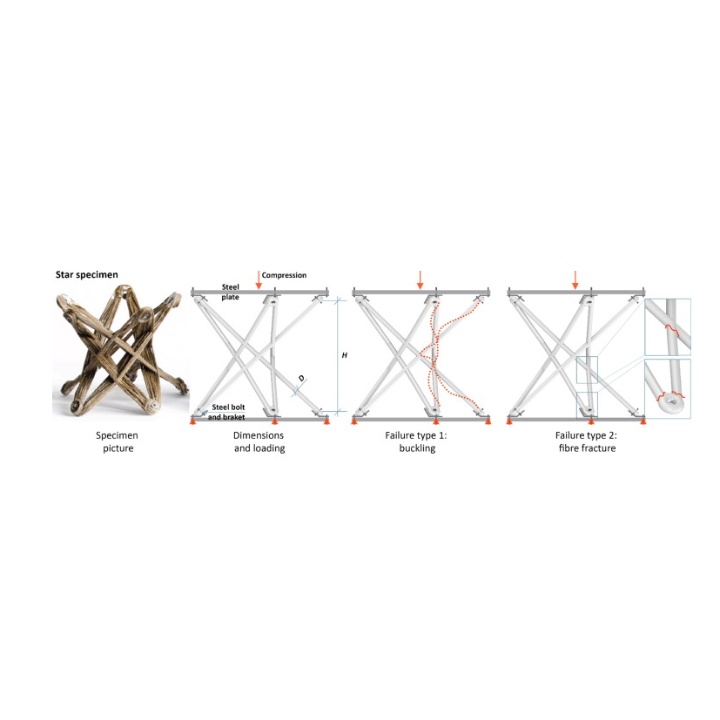
ELSEVIER journal Materials & Design just published the paper “Integrative material and structural design methods for natural fibers filament-wound composite structures: the LivMatS Pavilion” about the structural design and material testing of the ITECH studio project livMatS Pavilion.
The pavilion stems from the successful collaboration of an interdisciplinary team of architects and engineers of the ITECH master`s program at the Cluster of Excellence “Integrative Computational Design and Construction for Architecture (IntCDC)” at University of Stuttgart and biologists from the Cluster of Excellence “Living, Adaptive and Energy-autonomous Material Systems (livMatS)” at University of Freiburg.
Congratulation to everyone who was involved in the development process of the project as well as authors Marta Gil Pérez, Yanan Guo and Jan Knippers!
Please find the full paper here: https://doi.org/10.1016/j.matdes.2022.110624
Abstract:
Coreless filament winding (CFW) is a novel fabrication technique that utilises fibre-polymer composite materials to efficiently produce filament wound structures in architecture while reducing manufacturing waste. Previous projects have been successfully built with glass and carbon fibre, proving their potential for lightweight construction systems. However, in order to move towards more sustainable architecture, it is crucial to consider replacing carbon fibre’s high environmental impact with other material systems, such as natural fibre. This paper evaluates several fibres, resin systems, and their required CFW fabrication adjustments towards designing and fabricating a bio-composite structure: the LivMatS Pavilion. The methods integrate structural design loops with material evaluation and characterisation, including small-scale and large-scale structural testing at progressive stages. The results demonstrate the interactive decision-making process that combines material characterisation with structural simulation feedback, leveraged to evaluate and optimise the structural design. The built pavilion is proof of the first successful coreless filament wound sustainable natural fibres design, and the developed methods and findings open up further research directions for future applications.


